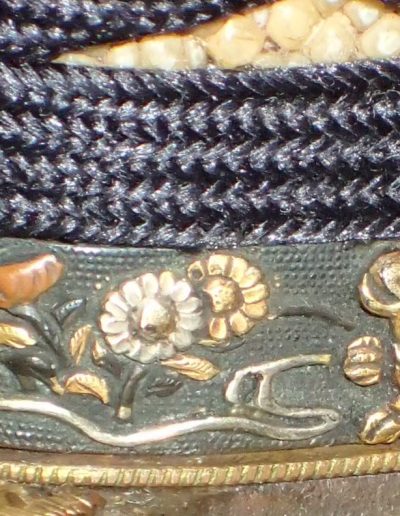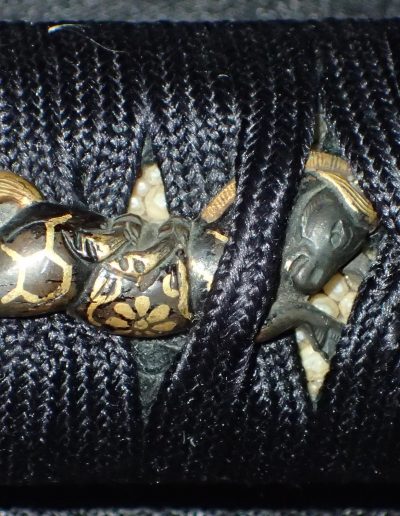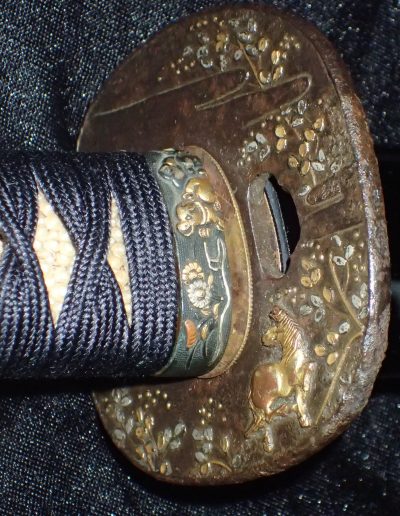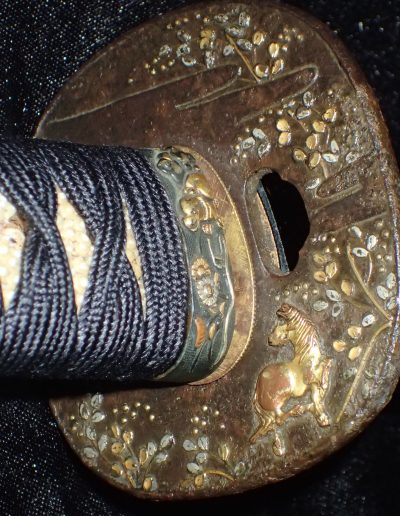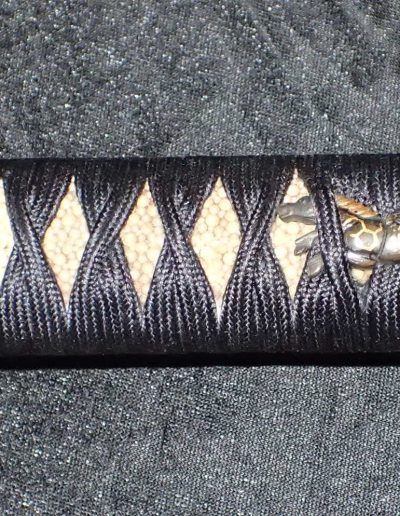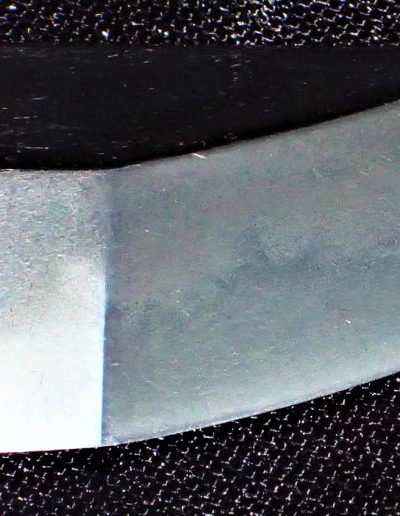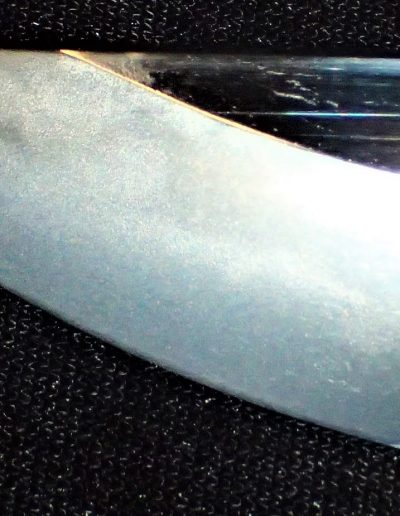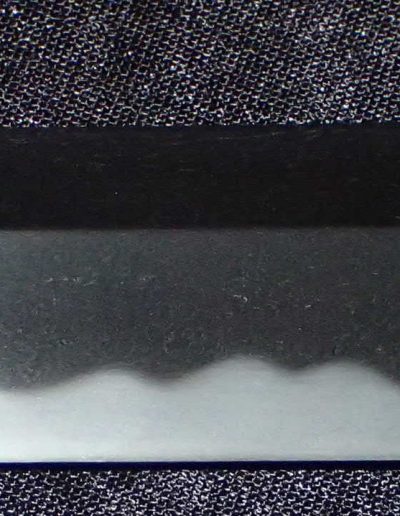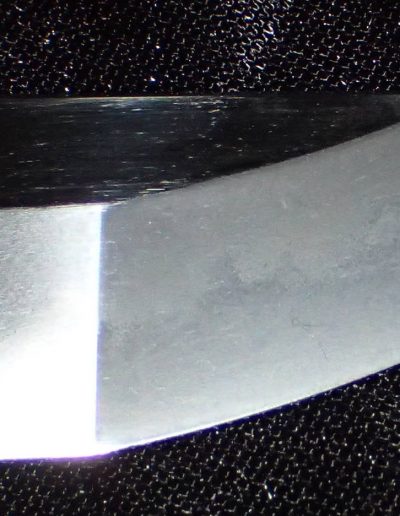Excellent Koto Nariie katana with NBTHK Juyo Token Certificate mounted in shirasaya and koshirae
Jūyō-tōken at the 49th jūyō shinsa held on October 9, 2003
katana, mumei: Nariie (成家)
Tōkyō, Aoyama Junkichi (⻘⼭順吉)
Measurements
nagasa 72.9 cm, sori 2.0 cm, motohaba 3.1 cm, sakihaba 2.1 cm, kissaki-nagasa 4.15 cm, nakago-nagasa
17.0 cm, nakago-sori 0.15 cm
Description
Keijō: shinogi-zukuri, iori-mune, wide mihaba, no noticeable taper, despite the suriage a deep sori
that appears as koshizori, ō-kissaki
Kitae: overall densely forged ko-itame that is mixed with mokume and that features ji-nie, fine
chikei, some jifu, and a faint midare-utsuri
Hamon: ko-notare in nioi-deki with ko-nie that is mixed with ko-gunome, togariba, ko-ashi, yō, and
fine kinsuji and sunagashi, and whose midare elements are overall relatively small dimensioned
Bōshi: nie-laden midare with a pointed kaeri that tends to nie-kuzure and that features hakikake
Nakago: ō-suriage, kirijiri, katte-sagari yasurime, two mekugi-ana (of which one is plugged), mumei
Explanation
Nariie (成家) was a late Nanbokuchō period Osafune School smith from Bizen province who
is said to have been a descendant of Kagehide (景秀) (who was the younger brother of Mitsutada,
光忠) and who is regarded as having belong to a local group that is referred to as Kozori (⼩反).
The meikan, however, sate that Nariie was active from around Bunna (⽂和, 1352–1356) to Kōan
(康安, 1361–1362), which predates somewhat the current view on his active period. Apart from
that, his workmanship and signature style suggest a possible connection to Kanemitsu (兼光), but
his date and association are a topic for further studies. In terms of skill, Nariie does rank about
equal to the contemporary Kanemitsu student Masamitsu (政光). Nariie focused on a midareba
that is mixed with notare and/or gunome, but which somewhat lacks the grandeur we see with
Kanemitsu.
This blade shows an overall densely forged ko-itame that is mixed with mokume and that
features ji-nie, fine chikei, some jifu, and a midare-utsuri. The hamon is a ko-notare in nioi-deki with
ko-niethat is mixed with ko-gunome, togariba, ko-ashi, and yō, and whose midare elements are overall
relatively small dimensioned. Kitae and hamon combined with the bōshi in midare with a pointed
kaeri, we recognize the typical workmanship of the Kozori group. Thus, in terms of interpretation
of the jiba and the powerful shape with a wide mihaba and an ō-kissaki, the blade shows the
characteristic features traditionally associated with Nariie. Particularly noteworthy is the
excellent kitae. Both ji and ha are very healthy and the blade is overall of a superb deki
NARIIE (成家), 1
st gen., Jōji (貞治, 1362-1368), Bizen – “Bishū Osafune Nariie” (備州長船成家), Kozori group
(小反), according to tradition the son of the 1st gen. Kozori Shigeyoshi (重吉), his gunome-chōji-midare in nioi-deki reminds
of Kanemitsu (兼光) but is more densely arranged, we know blades from the Bunna (文和, 1352-1356) to the Eitoku era
(永徳, 1381-1384, ryō-wazamono, chūjō-saku



